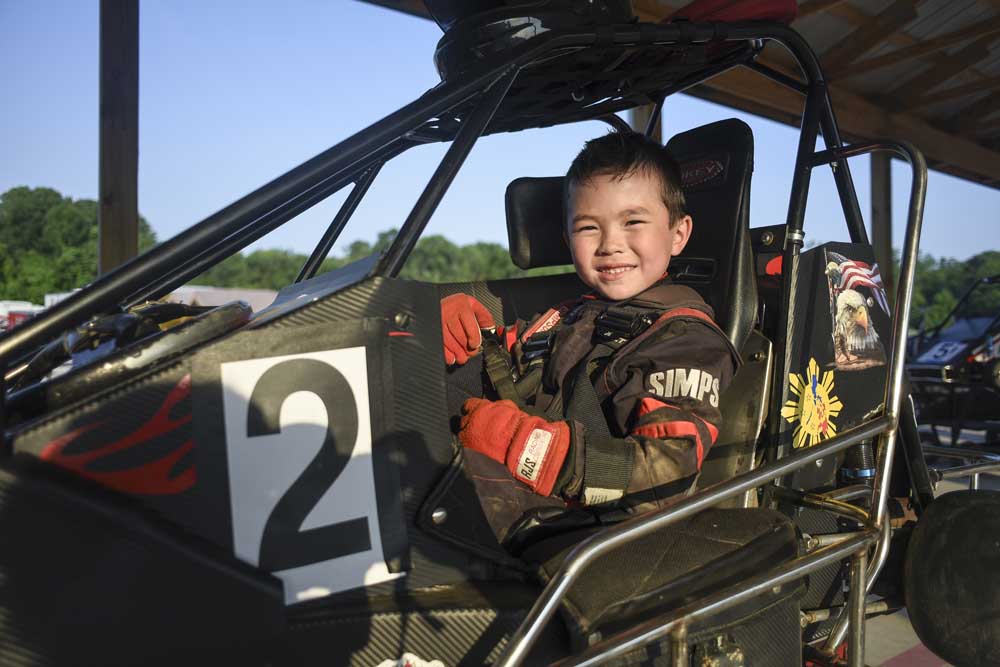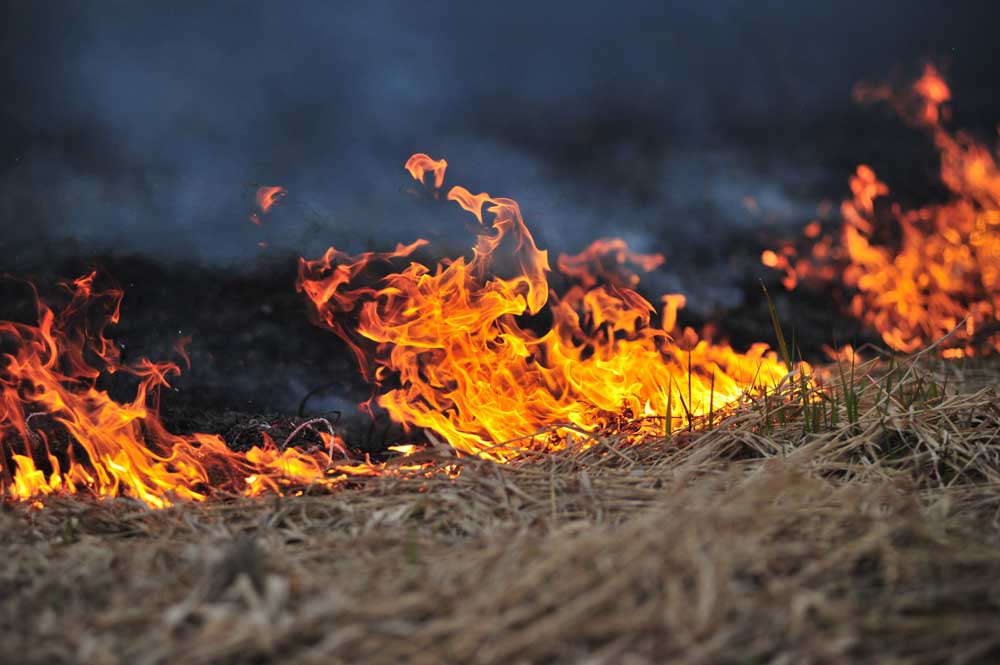The future of NASCAR may depend on ‘bad parents’ and 5-year-olds
Published 12:00 am Sunday, July 22, 2018

- Clayton Williams Jr. awaits a race at the quarter-midget track in Terre Haute, Ind., June 2, 2018. Clayton is among the thousands of children, ages five to 17, who race quarter-midget cars — small cars capable of reaching speeds in excess of 40 mph — on dirt, concrete and asphalt tracks throughout the United States. Clayton said his dream is “to race sprint cars on dirt tracks." (Stephen Hiltner/The New York Times)
TERRE HAUTE, Ind. — John Shipman, standing on an elevated platform beside a small dusty track, wiped the sweat from his eyes and tucked away a checkered racing flag. For the past 10 minutes, nine small cars had circled in front of him during a qualifying race, bolting along at speeds approaching 40 mph.
The catch: Not one of the nine racers had a driver’s license. The eldest, in fact, was still in middle school.
“Some people call us bad parents,” Shipman said.
The Terre Haute Quarter Midget Association, where Shipman is a volunteer flagman, is one of more than 70 racing clubs — many of whose members are drawn from the rural parts of the country — designed for the thousands of children, ages 5-17, who race quarter-midget cars.
Quarter-midget racing — named because the cars resemble scaled-down versions of the exponentially more powerful midget-style racers — is part of a vast tradition of U.S. auto racing, one that includes everything from NASCAR and IndyCar to the less regulated world of short-track racing, an infamously dangerous corner of the sport that often serves as a next step for ambitious young racers.
While auto racing remains one of the most popular spectator sports in the United States — a long way behind the top three (football, basketball and baseball) but on par with tennis and ahead of golf, according to a 2017 Gallup poll — its relative standing has dropped in recent years. Steady declines in attendance and television viewership at some of the sport’s highest levels, NASCAR in particular, have raised questions about its future — which will depend in part on how well the sport can attract younger drivers who can better appeal to millennial-friendly sponsors and a new generation of fans.
“There are so many kids racing NASCAR today that ran in quarter midgets just six or seven years ago,” said Kevin Miller, president and CEO of U.S. Auto Club, which sanctions a range of racing series, including quarter midgets. “You can see the talent at 7 or 8 years old.”
Jeff Gordon, a four-time NASCAR Cup Series champion and a five-time winner of the Brickyard 400, got his start racing quarter midgets at a small dirt track in Rio Lindo, California. Gordon said quarter-midget racers “absolutely” represent the future of the sport. “They play a very important role in racing,” he said, noting that even participating children without professional ambitions are likely to become lifelong fans. “It’s a subculture all over the country,” he added.
For families whose children harbor racing aspirations, quarter-midget tracks offer one of the earliest possible introductions to motor sports. Although crashes can sometimes be “spectacular,” as one parent described them, regulations and safety protocols abound, and only as the children progress in age, size and experience are they permitted to compete in incrementally more powerful classes. Still, parents of quarter-midget racers are accustomed to a certain line of questioning: How can youngsters, some of whom cannot read and are just beginning to dress themselves, be permitted to enter motor sport races?
“If you’re not involved in it, you just don’t get it,” said Shipman, who raced quarter midgets in the 1960s, and whose son, now grown, once raced, too. “It’s a culture in itself. You get it in your blood and you can’t get it out.”
The history of quarter-midget racing as an organized sport dates at least as far back as 1954, when — according to Doug Schiller, one of the first racers — a group of parents gathered at a parking lot in Mineola, New York, a village on Long Island, to a build a makeshift racing oval. The sport gained popularity on the East and West coasts before spreading to all 50 states.
Quarter-midget cars are powered by small one-cylinder engines, many of which have been repurposed from outdoor power equipment: lawn mowers, generators, concrete compactors. Tracks are generally 1/20 of a mile long and are made of dirt, asphalt or concrete. Speeds in the higher classes can top 40 mph.
A majority of young racers will try their hand at quarter midgets and proceed no further. Some, however, will transition to full-size race cars, including midget cars, sprint cars and stock cars. At some racing tracks in the United States, children as young as 11 are allowed to race full-size cars — including sprint cars with power outputs in excess of 800 horsepower. The output for quarter-midget cars, by comparison, is typically about 5 horsepower. (A typical entry-level sedan has about 150 horsepower.)
Clayton Williams Jr., who is 7 and has been racing quarter-midget cars for two years, loves the speed more than anything else. His dream, though? “To race sprint cars on dirt tracks,” he said.
To be sure, quarter-midget racing carries risks. YouTube is strewn with clips that showcase the potential perils for racers and spectators: collisions, flipped cars and, even worse, flipped cars followed by collisions.
With any sport, and with athletes of any age, there is an inherent risk of injury, said Dr. Camden Burns, an orthopedic trauma and spine surgeon at Indiana University Health. For young quarter-midget racers, basic skills such as coordination and reaction time are still developing, as are the racers’ musculoskeletal systems. If the appropriate precautions are not taken, Burns said, crashes at even 20 or 25 mph could cause fractures of the extremities, spinal cord injuries and concussions.
Concussions are a threat at all levels of racing (NASCAR updated its concussion protocol in 2017), but they can be particularly dangerous for children. After brain injuries, some children recover just fine, said Dr. Emily Dennis, a postdoctoral scholar at the University of Southern California’s Keck School of Medicine. But others can experience sleep problems or headaches or be too distracted to concentrate in school — and the effects can snowball.
Brain injuries for children can also be easy to overlook, Dennis said, especially if a young child is not capable of adequately articulating his or her symptoms, or if a parent does not know what exactly to look for. “The signs of concussion can be subtle,” she added.
For their part, quarter-midget officials insist that safety regulations are a top priority — and that they are effective. “Our safety record is very good,” said Denise Smutny, president of the Quarter Midgets of America. Injuries tend to be very minor, she said — though on rare occasions accidents can result in a broken arm, leg or collarbone.
Risks aside, another factor for many families is the financial cost, which can be prohibitive even at the quarter-midget level. Secondhand cars start at about $1,000, but new and more competitive cars — especially those outfitted with high-end suspensions and carbon fiber components — can approach $10,000.
“It takes money,” said Dan Wallace, who drives a truck for a living and whose son, Cameron, races quarter midgets out of Terre Haute. Travel expenses can add up, too, he said.
To help defray the initial expenses, the club in Terre Haute keeps a handful of scholarship cars on hand; they are lent to families who might be unfamiliar with racing — or who are hesitant to invest thousands of dollars in what might prove to be a child’s passing fancy. Such initiatives can help expand the sport’s demographic beyond families with direct ties to its tradition. (Racing in the United States has long been dominated by white athletes and a white audience; in 2014, NASCAR viewership was 94 percent white, according to data from Nielsen.)








